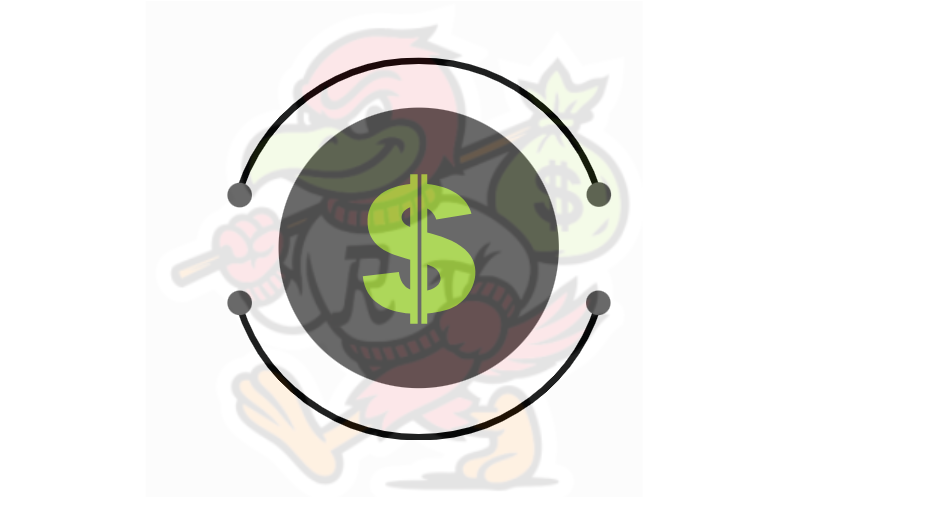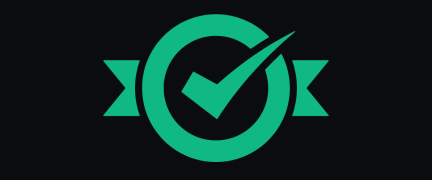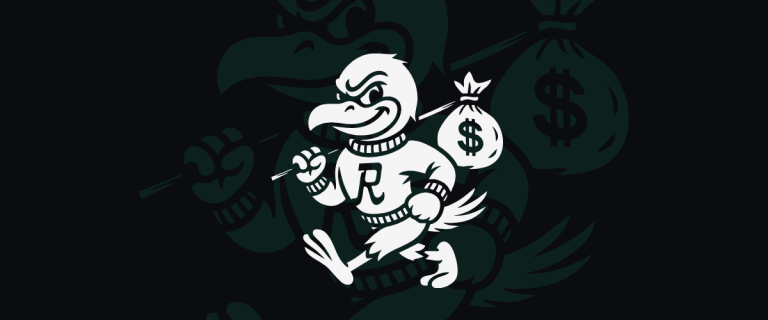We guide you through practical steps so a smaller audience can create real opportunities. This introduction explains how name, image, and likeness function as rights you control and how you can translate presence into money while protecting eligibility.
Monetizing NIL
College sports are changing: schools may pay athletes from new pools, and oversight now focuses on fair market value and valid business purpose. Understanding the split between direct school pay and third‑party deals helps you spot where income can come from and what each deal must prove.
This guide shows how athletes with niche followings use authenticity, engagement, and a clear personal brand to win partnerships. We cover social media tactics, metrics brands value, and contract basics so you can pursue compliant, repeatable opportunities that build long‑term value.
Understand today’s NIL landscape and what’s changing in college sports
The landscape for athlete endorsements and school payments is shifting fast, and understanding the differences matters.
What counts as fair market value: Third-party deals must reflect compensation for services tied to your name, image, and likeness — such as posts, appearances, or original content. These payments cannot be conditioned on athletic performance, school choice, or roster status. That distinction preserves your eligibility under current rules and state law.
Upcoming changes to watch:
- Starting July 1, 2025, schools may make direct payments separate from third-party deals — funds capped per school and overseen by the College Sports Commission.
- Roster caps (for example, a 105-player cap in football) change scholarship dynamics and may affect how teams and athletes view supplemental compensation.
- Any deal over $600 must be reported through NIL Go, which reviews fair market value and valid business purpose.
Quick compliance snapshot
| Area | Key point | Action for athletes |
|---|---|---|
| Fair market value | Payments reflect services, not play or school choice | Document deliverables and rates in contracts |
| Reporting | Deals > $600 reviewed in NIL Go | File promptly and retain receipts |
| Restricted categories | Alcohol, gambling, firearms, etc., often blocked | Check school sponsor conflicts before signing |
Monetizing NIL when you’re a niche athlete
A strong, focused presence can turn niche followings into steady brand opportunities. We show practical steps so you can earn money from thoughtful content and local partnerships.
Leverage authenticity and consistent content over follower count
Authenticity wins: Micro-influencers with ~1,000 followers can land deals when engagement is high.
Post reliably—share training clips, behind-the-scenes routines, and short Q&A media that show personality and value.
Pick the right platforms for your sport and audience
Use TikTok and Instagram for short highlights, YouTube for deep training, and LinkedIn for community or B2B outreach.
“Brands pay for trust and measurable engagement more than large follower numbers.”
| Focus | Why it works | Action |
|---|---|---|
| Short-form video | High engagement, shareable | Daily 15–60s highlights |
| Long-form content | Builds authority and watch time | Weekly training breakdowns |
| Marketplaces | Match athletes with sponsors | List profiles on Opendorse, Icon Source, MarketPryce, NIL Store |
- Show engagement metrics—comments, saves, watch time—to demonstrate value for deals.
- Label sponsored posts and document deliverables to protect eligibility.
- Collaborate with teammates to expand reach and package bundled opportunities.
Build a personal brand that attracts compliant, high-fit deals
A well-crafted athlete narrative makes it easy for brands to see the value in partnering with you. Start by treating your public profile as a professional portfolio rather than a casual feed.
Clean up and optimize your social media presence
Audit bios, pinned posts, and highlights. Remove or archive content that conflicts with school sponsors or restricted categories.
Checklist:
- Clear bio with contact info and role.
- Pinned post demonstrating recent, brand-safe work.
- Moderated comments and story highlights that show consistency.
Tell a compelling athlete story that brands can align with
Connect your name and achievements to themes—leadership, resilience, or community service. Brands pay for narratives that match their values.
Content cadence: Mixing training, lifestyle, community, and academics
Plan weekly beats: short training clips, one lifestyle post, a community moment, and an academic update. This makes deliverables predictable for sponsors.
Professionalism online and in public appearances
“Sponsors prioritize how you present yourself online, in public, and in media.”
Be punctual, use talking points, and share a simple asset kit—headshots, short bio, and stats—to speed approvals and protect compliance.
Find NIL opportunities: Local-first, platforms, and direct outreach
Start with a simple plan: combine community outreach, marketplace profiles, and concise pitches to win first deals. Local partners move quickly and can fit your school calendar.
Start local: Restaurants, gyms, shops, and regional brands
Identify 25–50 prospects—cafes, training centers, specialty shops, and regional brands. Offer clear deliverables: a post, an appearance, or a short team promo.
Typical pricing ranges from $50–$500 for social shout-outs; regional reach can command $1,000–$10,000 per deal.
Use marketplaces: Opendorse, Icon Source, MarketPryce, NIL Store
Create a complete profile on platforms to browse nil deals. These services speed approvals and list pre‑set scopes that help college athletes close faster.
Pitching brands: Short value-forward messages and engagement stats
Send a three-sentence pitch: who you are, audience and engagement, and one clear call-to-action. Bundle tiers—single post, month series, or code-driven campaign—to help partners forecast money outcomes.
- Loop in your school’s compliance team for sponsor checks and introductions.
- Collect proof-of-performance—screenshots, insight exports, and redemption counts—to strengthen renewals.
NIL compliance and contracts: Protect eligibility and your rights
Clear rules, careful contracts, and timely reporting keep opportunities open and eligibility intact. We map the legal and institutional steps athletes must follow so a deal never becomes a risk.
Know your state laws, school policies, and NCAA guidance
Start by checking state statutes and your school’s policy. Both affect what activities you can accept and how payments are handled.
Keep a copy of the applicable law and the school rule in a single folder. Share them with your compliance officer before talks move forward.
Restricted categories and sponsor conflicts
Certain categories—alcohol, tobacco, gambling, adult entertainment, firearms, and controlled substances—are commonly blocked. A conflicting sponsor can void a deal.
Tip: If a partner may clash with school sponsors, decline or route the conversation through your compliance officer and legal counsel.
Report deals over $600 and document fair market value
Any nil deal over $600 must be reported through NIL Go. Describe the scope, deliverables, and business purpose so reviewers can confirm fair market value.
Keep proof-of-performance: signed scopes, screenshots, and payment records for audits and renewals.
Use contracts and consult a compliance officer or lawyer
Insist on written contracts that define scope, deliverables, payments, usage rights, and termination. Watch for morals and dispute clauses.
- Ask your compliance officer to review conflicts and reporting steps.
- Have a lawyer confirm tax, privacy, and state-specific issues before you sign.
“Disciplined compliance builds trust with schools and brands, opening more opportunities over time.”
Pricing and payment models that work for smaller audiences
When your audience is niche, price proposals must tie directly to outcomes brands can track. We recommend engagement-driven pricing so your asks scale with views, saves, and clicks.
Setting rates: Engagement-driven pricing for posts and appearances
Starter tiers: single shout-outs commonly range $50–$500. Regional packages with codes and recaps often fall between $1,000–$10,000 per deal.
Tip: Anchor asks to average views or saves. Show CPM/CPE/CPS calculations to justify rates and shorten negotiations.
Compensation options: Flat fees, royalties, and milestone payments
Flat fees are simple. Royalties let you earn money from product lift. Milestones work well for multi-phase campaigns around a season or academic calendar.
“Ground rates in measurable outcomes—brands buy predictable returns, not promises.”
| Format | When to use | Typical range |
|---|---|---|
| Single post (flat) | Quick exposure, low effort | $50–$500 |
| Regional package | Multiple posts, codes, short appearance | $1,000–$10,000 |
| Royalties / revenue share | Product partnerships or merch | 5%–20% of sales |
| Milestone payments | Campaign phases or performance triggers | Split by deliverable |
Include payment timing, late-fee clauses, approval windows, and kill fees in every contract. This protects cash flow and clarifies expectations for brands and college compliance teams.
We encourage three package tiers—small, medium, large—and clear renewal triggers based on performance. That helps athletes plan training and campus schedules while building reliable deals.
Conclusion
A focused plan and professional habits make niche athletes attractive to smart brands.
We remind you that changes from the House v. NCAA settlement add direct school payments alongside traditional nil opportunities. Stay current on state rules, school policy, and regulations to protect eligibility.
Document your name, image, and likeness usage, contracts, and activities. Keep clear records so renewals and nil deals run smoothly.
Next step: audit profiles, assemble a media kit, shortlist 25 local prospects and two marketplaces, then send three concise pitches this week.
Prepare a short list of questions for compliance, brands, and platforms about approvals and timelines. Professionalism, timely reporting, and clear deliverables protect your rights and help build long-term value in college sports and beyond.
FAQ
What does the current name, image, and likeness landscape look like for college athletes?
The landscape allows student-athletes to earn for their name and image under state laws and school policies. The environment is changing—court rulings and NCAA guidance have opened more paths for compensation, while schools and states set specific rules. Stay updated with your compliance office to know allowed activities and reporting procedures.
How is pay-for-play different from fair market value deals?
Pay-for-play means compensation tied directly to on-field performance or recruitment inducement, which often risks eligibility. Fair market value compensates for services like social posts, appearances, or endorsements based on reach and engagement. Contracts should describe deliverables, timeline, and payment clearly to show value without violating rules.
What major legal changes should athletes watch for?
Watch developments from the House v. NCAA settlement and potential rules on direct school payments and roster caps. These could change who can pay athletes and how schools distribute resources. Follow reputable sources and your compliance office for official guidance before acting on new offers.
How can niche athletes earn without a large following?
Niche athletes succeed by focusing on authenticity, local connections, and consistent content. Brands value tight communities and high-engagement audiences. Offer specialized content—skill tutorials, behind-the-scenes practice, or community outreach—that aligns with a sponsor’s objectives.
Which platforms work best for different sports or audiences?
Choose platforms where your audience is active. Instagram and TikTok suit visual sports and highlight reels. YouTube is strong for long-form training and storytelling. Twitter (X) and LinkedIn help with thought leadership and networking. Match platform format to content type and sponsor goals.
What should I fix on my social profiles to attract deals?
Clean bios, clear contact info, and consistent branding help. Use a professional profile photo, pinned highlights or pinned posts showing past partnerships, and a media kit link. Remove controversial content and ensure captions, tags, and analytics are easy to present to potential partners.
How do I create an athlete story that brands want to back?
Tell a focused story: your sport, values, community impact, and goals. Use short video, captions, and testimonials to show authenticity. Brands seek alignment—show how your narrative boosts their mission or reaches their target audience.
What content mix performs well for niche athletes?
Use a balanced cadence: training clips, lifestyle posts, community involvement, and academic or career milestones. Aim for regularity—three to five quality posts a week—mixing short-form video, photos, and occasional long-form content to retain audience interest.
How should I behave during paid appearances and endorsement shoots?
Be professional and punctual. Understand the brand’s objectives, follow creative briefs, and represent both your school and the sponsor respectfully. Keep communication clear and provide agreed deliverables on time to build repeat business.
Where should I start looking for opportunities locally?
Approach neighborhood restaurants, gyms, equipment stores, and regional brands. Community partners often welcome collaborations that boost local traffic. Prepare a short pitch and sample deliverables—such as a one-minute promo video or an appearance package.
Which marketplaces can help connect me with brands?
Use platforms like Opendorse, Icon Source, MarketPryce, and NIL Store to list your profile and discover offers. These marketplaces streamline contracts, campaign briefs, and sometimes compliance reporting. Compare fees and terms before committing.
How do I write an effective brand pitch?
Keep it concise and value-forward. State who you are, key audience metrics, a campaign idea, and measurable outcomes. Attach engagement stats and examples of past content. A clear call to action and flexible pricing tiers increase reply rates.
What are the key compliance rules I must follow?
Know your state law, school policy, and any NCAA guidance. Report contracts to your compliance office, avoid restricted sponsor categories, and ensure deals do not conflict with school agreements. Always document deliverables and payments to protect eligibility.
Which sponsor categories are commonly restricted?
Schools often restrict deals with gambling, explicit adult content, or competitive sponsors that conflict with institutional partners. Review your school’s prohibited list and consult compliance before negotiating in sensitive industries.
How and when should I report deals for taxes and school records?
Report deals over $600 and any university-required agreements through the school’s reporting system, often NIL Go or a similar portal. Keep invoices, contracts, and payment records for tax reporting and to maintain eligibility compliance.
Should I use an attorney or a compliance officer to review contracts?
Yes. Have a lawyer review legal language, intellectual property rights, and indemnity clauses. Your school’s compliance officer checks eligibility and policy alignment. Use both when possible to protect rights and status.
How do I price posts and appearances with a small audience?
Base rates on engagement, niche relevance, and deliverables. Use engagement-driven pricing—cost per engagement or per post—and offer bundled packages for multiple posts, appearances, or milestones. Be transparent and provide performance guarantees when reasonable.
What payment models are common for smaller deals?
Brands use flat fees for single posts or appearances, royalties for product sales, and milestone payments for multi-part campaigns. Choose a mix that suits the campaign risk and your cash-flow needs. Always specify payment timing in the contract.
How can I show fair market value for a deal?
Document comparable market rates, engagement metrics, and deliverables. Use past campaign results, local sponsorship examples, and marketplace benchmarks to justify pricing. Clear documentation helps compliance and tax reporting.
How do schools handle direct payments to athletes?
Policies vary. Some schools permit third-party deals but restrict direct institutional payments. Upcoming legal shifts may change this. Consult your compliance office before accepting offers that involve school funds or in-kind support.
What risks should I avoid when pursuing deals?
Avoid agreements that promise pay-for-play, conflict with school sponsors, or demand unrealistic performance guarantees. Steer clear of ambiguous IP grants that transfer long-term rights to your image. Vet partners for reputation and payment reliability.
How can I build long-term brand relationships as a niche athlete?
Deliver consistent results, maintain professionalism, and report campaign impact. Offer exclusivity at premium rates only when it aligns with long-term goals. Nurture local partnerships and scale to regional or national brands as your audience grows.
What metrics should I track to improve earnings?
Track engagement rate, video view-through, click-through, conversion from promo codes, and audience demographics. Present these metrics in a media kit to justify fees and demonstrate campaign ROI to potential sponsors.
Who should I contact at my school for NIL guidance?
Contact your athletic department’s compliance office or the school’s NIL coordinator. They provide policy details, reporting portals, and approved vendor lists. Use their resources before signing or publicizing deals.
Are there educational resources to learn more about deals and contracts?
Yes. Many universities offer workshops, and platforms like Opendorse publish guides. Legal clinics and local sports business organizations also provide training. Use credible sources and consult professionals for contract questions.






Leave a Comment